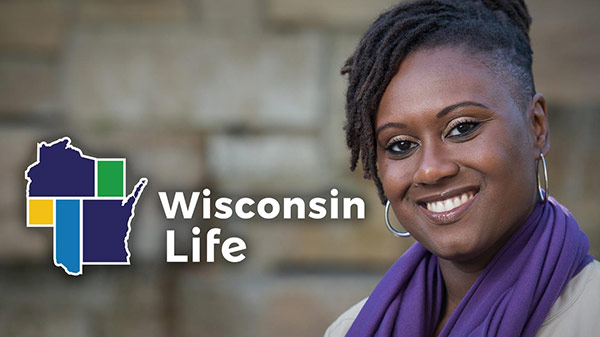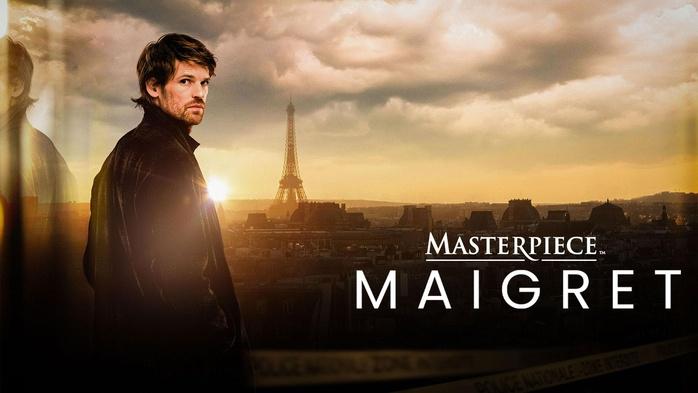Alan Anderson: I have a quote that I printed out. “Tradition is not the saving of ashes. It’s the maintaining of fire.” I loved it.
[gentle acoustic guitar music]
Alan Anderson: My name is Alan Anderson. All four of my grandparents were born in Sweden. Our family has kept a lot of those Swedish traditions alive just because of that reality. And one of the traditions I have maintained over the years is making a very traditional Swedish Christmas candle called a “grenljus” or branch candle. And I think, as far as I know, I’m the only one in the United States who’s making them and selling them.
Alan Anderson: I had never dipped candles until I tried this. And it takes a while. But when I make a batch, I have to get in the mood. Get the wax together. I have a very large pot that holds about 30 pounds of wax ’cause it has to be fairly deep. The wicks themselves are a braided wick. So there’s a central wick that forms the bottom that goes into a candle holder and a longer wick that forms the arch. All that has to get put together. Some little pins that holds the wicks into this wooden stick, and then you’re ready to go.
Alan Anderson: If you dip too fast, too often, you’ll literally melt the wax off of the wick. So there’s a resting period between dips. There’s this rhythm that I have as you go through. And it becomes at one level, a bit boring, dipping, and another level very meditative.
Alan Anderson: Folk art, in my mind, is something that is produced by people by hand, that’s functional, but has been added to by something that’s beautiful.
Alan Anderson: I’m interested in wood. One of the things I’ve known from visiting in Sweden, every time you see something that a Swedish person has made, a craftsman, a folk artist, somewhere on that piece, there’s a set of initials. They’ve marked it. It’s a matter of pride. There’s this very human need to identify: I made this. It’s not necessary. It’s ornament.
Alan Anderson: There’s a tradition in Sweden. A small village would gather and there would be this effort to prepare for the winter. How do we get through the darkest time in the winter? We need candles. Not just for the evening meal, but also for the religious part of that. Three-pronged candles were made specifically in the old days for Epiphany to celebrate the Three Wise Men. And a candle isn’t necessarily a fancy thing. It’s very functional. But to take and make the three-pronged candle is an odd one. Why not just have three candlesticks and three candles? So they did something special there.
[bright music]
Alan Anderson: The candles I make will last about six hours. So I jokingly say that’s enough for three good meals or two fantastic meals. [laughs]
Alan Anderson: I’ve told my kids lately I’ve got about four and a half lifetimes of things I wanna make, and I’m running out of time. [laughs] For whatever reason, when I think about people hanging on to cultural traditions, it’s about hanging onto things that are important to them. They get those importance from family, from their community, from their culture. They’re memories that they don’t want to lose of important things, fun things, beautiful things. It’s a memory infused with love.
Alan Anderson: Make your own traditions. Figure out something that’s your love to pass on to family, and that becomes a tradition. I think that’s important.
[bright music]
Search Episodes

Donate to sign up. Activate and sign in to Passport. It's that easy to help PBS Wisconsin serve your community through media that educates, inspires, and entertains.
Make your membership gift today
Only for new users: Activate Passport using your code or email address
Already a member?
Look up my account
Need some help? Go to FAQ or visit PBS Passport Help
Need help accessing PBS Wisconsin anywhere?

Online Access | Platform & Device Access | Cable or Satellite Access | Over-The-Air Access
Visit Access Guide
Need help accessing PBS Wisconsin anywhere?

Visit Our
Live TV Access Guide
Online AccessPlatform & Device Access
Cable or Satellite Access
Over-The-Air Access
Visit Access Guide
 Passport
Passport






Follow Us